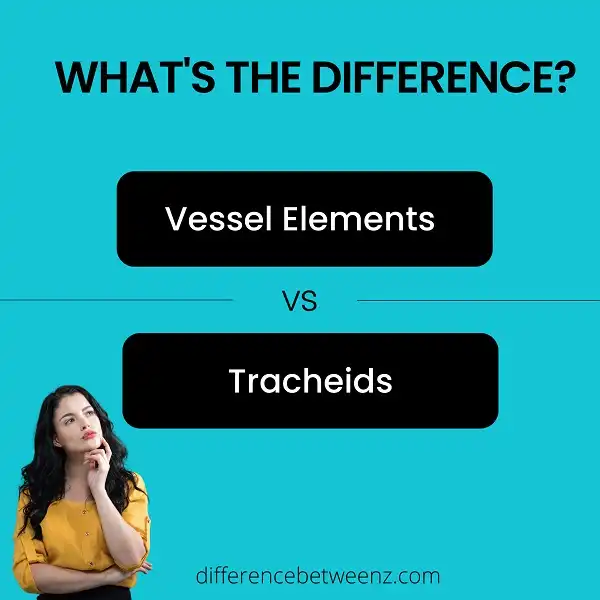There are two main types of cells in a tree’s xylem: vessel elements and tracheids. Each type has its own unique functions that help the tree to function properly. Understanding the differences between these two cell types is important for anyone who wants to learn more about trees and their biology. Let’s take a closer look at each type of cell and see what makes them special.
What are Vessel Elements?
Vessel elements are the primary conducting cells of xylem tissue in higher plants. They are cylindrical, have thick walls, and are arranged end-to-end to form Vessels. Vessel elements are living cells when they are first produced, but they soon lose their nucleus and most organelles. As a result, they become hollow tubes that can transport large quantities of water with little resistance. Vessel elements are found in the xylem tissue of plants, which is responsible for transporting water and soluble minerals from the roots to the leaves. The cell walls of vessel elements are perforated by numerous pores that allow water to flow freely from one cell to the next. The arrangement of vessel elements maximizes the surface area available for water transport while minimizing resistance to flow. This makes them an extremely efficient means of transporting large quantities of water over long distances.
What are Tracheids?
Tracheids are one of the two types of water transport cells in plants. They are found in the xylem tissue, which is responsible for moving water and minerals up from the roots to the rest of the plant. Tracheids are elongated cells with tapered ends. They have thick walls that are strengthened by lignin, a durable polymer that helps to keep the cell rigid. Tracheids are arranged end-to-end in a long row, with their cell walls joined together at narrow cross-walls called pit pairs. Water flows through the tracheids by osmosis, moving from areas of high water potential to areas of low water potential. This flow is driven by the transpiration gradient, which is created when water evaporates from the leaves, creating a negative pressure that pulls water up through the plant. Tracheids play an essential role in plant hydraulics, and they are one of the reasons why plants are able to grow tall without collapsing under their own weight.
Difference between Vessel Elements and Tracheids
Vessel elements and tracheids are two types of cells that are found in the xylem tissue of plants. Vessel elements are elongated cells that are arranged end-to-end to form long, continuous tubes. Tracheids, on the other hand, are shorter and narrower than vessel elements, and they are not arranged in continuous tubes. Instead, they are interconnected by thin bridges of wall material known as pit pairs. Both vessel elements and tracheids play an important role in transporting water and minerals from the roots to the leaves of plants. However, vessel elements are more efficient at transport than tracheids due to their longer length and higher number of pit pairs. As a result, most plants contain more vessel elements than tracheids in their xylem tissue.
Conclusion
The main difference between vessel elements and tracheids is that vessel elements are more efficient in transporting water. Tracheids are better at transporting solutes because they have a thicker cell wall. This makes them ideal for structural support. There are other differences, such as the number of cells in each type and where they are found in the plant, but those are the two most important distinctions.


